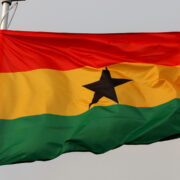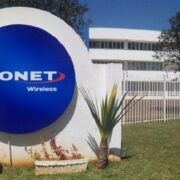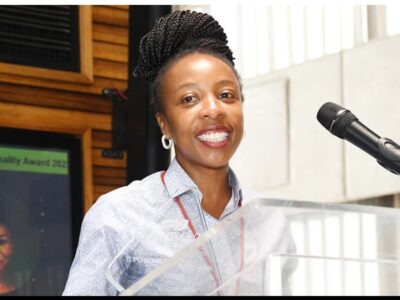The minister of ICT Postal and Courier Services Hon Supa Mandiwanzira launched the Zimbabwe National Frequency Allocation Plan (ZNFAP) recently in Mutare.
Following up on the World Radio Communication Conference (WRC-15) recommendations, the newly harmonised bands identified for mobile included C-band (3.4GHz-3.6GHz), is suited for delivering capacity in urban areas while; L-band (1427MHz-1518MHz), offers an ideal blend of coverage and capacity capabilities; and an extension of the 700MHz band (694MHz-790MHz) from Americas and APAC
In the frequency domain, the usable part of the radio spectrum falls within the range 8.3 kHz – 300 GHz (where Hetz stands for cycles per second for a given wavelength). The 700 mhz has been identified as the most ideal frequrency for 4G and upcoming faster data connectivity speeds.
The WRC paved way for the future of radio communications enabling smooth development of all radio-communications services including mobile broadband, satellite delivery,television broadcasting, scientific services and emergency services.
Here is the full speech by the minister:
It gives me great pleasure and honour to address this August
house at the occasion of the launch of the first edition of the
Zimbabwe National Frequency Allocation Plan, code-named
ZNFAP. As we heard from the Director General ln his address,
dalegates here present are honoured to witness the official
launch of the inaugural version of this national blueprint, and
I hasten to say I have a slight edge over you, dear delegate;
as I am the one holding the scissors — ready to cut the ribbon
on this crucially important National Blueprint on the access and
use of radio frequency spectrum resources.The radio spectrum is a subset of the electromagnetic waves
falling in the same family as electric waves, light, X—rays and
gamma rays, alike. In the frequency domain, the usable part of
the radio spectrum falls within the range 8.3 kHz – 300 GHz
(where Hetz stands for cycles per second for a given
wavelength). I am sure we all know the frequenqy for Radio
Zimbabwe which is 89.1MHz here in Mutare and that of Zi-FM
which is 95.4MH2, to name just a few. We also know that as
we travel from here to Harare, for example, at some point the
signal fades and we have to change frequencies so that we
keep tuned into our favourite station. Thanks to its capabilities to carry information (in the form of electromagnetic energy ),This allows it to propegate over distances and penetrate various media
including clouds radio Spectrum is a major Input into todays
technology-driven economies and connected societies.Clearly, the availability of spectrum is now a precondition for a
Strong national digital infrastructures As a result of
developments such as Cloud Computing and the Internet of
Things, there is an exponential increase in the demand for
spectrum and Society, in general, is imposing ever greater
requirements on the capacity, availability and reliability of radio
communications and radio infrastructure in general.I may be preaching to the converted, but allow me ladies and
gentlemen to underline the increasing importance of radio
frequency spectrum to our economy and to the daily lives of all
our citizens — young, middle-aged and the elderly alike.
Spectrum is the oxygen of today’s economy which, I must say,
is increasingly more digitised than ever before, As individuals, we are much better-connected than one would have ever imagined at the turn of the century; our industries are more
digital than ever and more is rising up the horizon in the form of emerging technologies like
Augmented Reality (AR), Artificial Intelligence the Internet of Things (101’s) to name just few; our academic, health and public institutions are
fast becoming hubs of smart technologies;our Cities are becoming smarter and homes are buzzing with smart devices,
sensors and gadgets that In the not so distant past belonged to
the world of science fiction. The common thread to all these
facets of today’s way of life, Ladies and Gentlemen, is the
natural, Invaluable and inexhaustible resource namely radio
frequency spectrumFrom a policy perspective, Wireless Technology is crucial in
engendering our industrialisation Agenda, in empowering
people to participate in the digital future that we are building
towards, and in helping the Government better serve the
citizens.Aware of the crucial importance of spectrum resources across all sectors of the economy, Government established POTRAZ and gave it the responsibility to manage the resources onbehalf of the people of Zimbabwe. This, of course, is a remit of
no mean proportion as the resource has, in recent times,
assumed greater social and economic value as a result of its
direct application in virtually all facets on the ‘
society including telecommunications,transportation, health ‘to name just a few.In addition to its direct use in these sectors, radio systems and applications have become an intergral part of a wide range of other socio-economic activities such as security;
defence; social services; smart grid; earth exploration;
navigation systems; smart agriculture and, not to mention, the
increasingly Connected home environment.Consequently, a major industry is developing around radio spectrum resources.
Spectrum-based services have thus continued to yield
economic benefits through employment generation, increased
productivity, rural integration and capacity utilisation.In addition to the aforementioned Public Policy imperatives, Iwould like to underscore the following spectrum objectives which POTRAZ must always pay attention to and thrive to
achieve:i. Meet, in a rational, equitable, efficient, economical and timely way Zimbabwe’s requirements for radio-frequency spectrum, for personal, household, commercial and government electronic-communication needs, while avoiding harmful interference.
ii. Meet the spectrum requirements for national security, defence, law enforcement and crime prevention.
iii Meet the requirement for national and international transportation systems, icluding aeronauctual and aviation systems.
iv meet the spectrum requirement for the media and infotainmement sector.
v. Meet the national spectrum needs for the promotion of scientic research development and Exploration
vi Foster spectrum -based innovation and competitiveness
and In the process social and economic development
and in the process create create jobs Jobs, Jobs….Ladies and gentlemen allow me to once again to underline
at the demand for Spectrum resources is on the increase and
Will continue on that trajectory for the foreseeable future. The
need for us to address legacy issues relating to social inclusion
and connecting the unconnected can never be wished away —
we need to act and act now in a decisive and definitive
manner. That notwithstanding, the (act that the horizon is
pregnant with emerging technologies, services and application
cannot be ignored either. We, therefore, have a daunting task
ahead of us and I am sure together as a unitary force we shall
overcome. We shall overcome the setbacks of the legacy issues
i talked about and we shall not allow ourselves to be left behind in the new world order connectedness, a world order caracterised by the internetbof things and ultimately theinternet of everything.Having expressed myself this much,ladies and gentlemen, it is now my Singular honour to declare the Zimbabwe National Frequency Allocation Plan, our National Blueprint on the access
and use of radio frequency spectrum resources, the cradle of our digital future — Officially LAUNCHED.












Comments